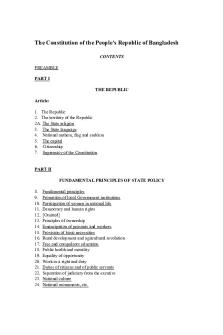Formal constitution without material constitution Chapter 1 PDF

| Title | Formal constitution without material constitution Chapter 1 |
|---|---|
| Author | basy lac |
| Course | Introduction to Constitutional Law |
| Institution | University of Chicago |
| Pages | 1 |
| File Size | 40.3 KB |
| File Type | |
| Total Downloads | 55 |
| Total Views | 135 |
Summary
Constitutional Law...
Description
Formal constitution without material constitution
CHAPTER 1
This is a much cited case, but it is no longer positive law. It is the old Swiss constitution of 1848, and it makes Switzerland a federal state for the first time. So we have a formal constitution, but if we read this text we find provisions that do not correspond to a material constitution. Article 25a of the Swiss Constitution of 1848 "the slaughter of animals for slaughter is forbidden according to the Jewish rite". So we are not in the organization of public services. We must study in Switzerland, the land of election of the referendum, the referendum of popular initiative are the citizens who are at the initiative of the question posed to the whole citizens. This type of referendum is widely used to draft cantonal legislation, that is, the laws of the federated states. On the other hand, in the federal framework, in the framework of the Swiss federal state, this popular initiative referendum exists only in one case, that of the revision of the constitution. We cannot have a federal law of popular initiative but a constitutional revision. The slaughter method is considered cruel and an association will try to ban it for all of Switzerland, so a federal law is needed. So the ASP will adopt a constitutional initiative and collect a petition and enough signatures to submit a constitutional revision project. And this petition is presented to all the citizens who adopted it in 1889. In France, formal revision of the constitution was practiced to prohibit provisions that did not correspond to the constitution. During the third republic, the longest in our country. OUR COUNTRY. This 1875 constitution was revised 4 times, in 1879, 1884, 1926 and 1940. All of them deal with substantive constitutional law, except one, the 1926 constitution, which does not deal with how power is exercised. At the time, France was particularly indebted and wanted to reassure its creditors, so the public authorities of the time created a sinking fund that was automatically fed by the sale of tobacco and matches, which was thus a state monopoly. This fund was created constitutionally to give it importance and to reassure the creditors and restore trust with them. So we are faced with a certain historical curiosity.
In most states of the world there is a coincidence between the formal and material elements of the constitution. This coincidence is summed up in the expression...
Similar Free PDFs

Constitution Paragraphs
- 3 Pages

Constitution Law
- 61 Pages

Constitution law
- 6 Pages

Constitution Worksheet
- 3 Pages

Assignment Constitution
- 6 Pages

British Constitution
- 8 Pages

1987 constitution
- 6 Pages

PHILIPPINE CONSTITUTION
- 2 Pages

Spanish Constitution
- 6 Pages

Constitution 1&2
- 97 Pages

Philippine Constitution 1
- 33 Pages

BAN Constitution
- 7 Pages

Codified constitution
- 5 Pages

Constitution espagnole
- 2 Pages
Popular Institutions
- Tinajero National High School - Annex
- Politeknik Caltex Riau
- Yokohama City University
- SGT University
- University of Al-Qadisiyah
- Divine Word College of Vigan
- Techniek College Rotterdam
- Universidade de Santiago
- Universiti Teknologi MARA Cawangan Johor Kampus Pasir Gudang
- Poltekkes Kemenkes Yogyakarta
- Baguio City National High School
- Colegio san marcos
- preparatoria uno
- Centro de Bachillerato Tecnológico Industrial y de Servicios No. 107
- Dalian Maritime University
- Quang Trung Secondary School
- Colegio Tecnológico en Informática
- Corporación Regional de Educación Superior
- Grupo CEDVA
- Dar Al Uloom University
- Centro de Estudios Preuniversitarios de la Universidad Nacional de Ingeniería
- 上智大学
- Aakash International School, Nuna Majara
- San Felipe Neri Catholic School
- Kang Chiao International School - New Taipei City
- Misamis Occidental National High School
- Institución Educativa Escuela Normal Juan Ladrilleros
- Kolehiyo ng Pantukan
- Batanes State College
- Instituto Continental
- Sekolah Menengah Kejuruan Kesehatan Kaltara (Tarakan)
- Colegio de La Inmaculada Concepcion - Cebu

